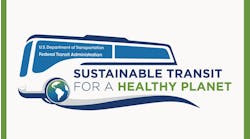It’s no surprise that since 9/11 the federal government has spent far more money defending airports against terrorist attacks than has been spent protecting subway and rail systems. According to a recent report by the marketing research firm, Frost & Sullivan, the Department of Homeland Security and the Transportation Security Administration have spent approximately $20 billion on aviation security, compared to roughly $960 million on mass transit security over the nine years since the attacks on New York City and Washington, D.C. This is despite a major disparity in the number of passengers selecting their mode of transportation. Roughly 700 million passengers travel through U.S. airports annually. Compare that to the more than 4 billion trips taken on subway and rail systems. There are continual debates about stricter screening methods at airport security checkpoints. While in the meantime, subway and rail passengers face virtually no screening at all. This has left the nation’s 3,200 stations and more than 20,000 miles of track far less secure than airports and even many key government buildings. Terrorists are taking note and beginning to target rail-based systems. Since 9/11, six terrorist plots targeting U.S. subway and rail systems have been exposed. Over the past five years, 22 nations have experienced terrorist attacks on rail-based transportation systems. During that time more people were killed, wounded or taken hostage on mass transit systems than on aircraft or in airports. It may be that the best way to ensure mass transit passenger safety would be to institute a screening program similar to what’s in place at airports. However, you have to wonder how many passengers would put up with a 20- to 30-minute delay before boarding a subway or train car. This ease-of-access is what attracts travelers to regional rail and metro transit systems, so any efforts at establishing airport-type screening might do more harm than good. Yet the very nature of mass transit systems — a large number of passengers, high infrastructure costs and locations in major cities or tourist destinations — will keep them atop many terrorists’ lists for an attack. So where do we go from here? Certainly additional funding for mass transit security would help. The Frost & Sullivan report said more money will likely be spent for that purpose over the next five years. That‘s a start.. Random screening of passengers and their carry-on items has been tried in several major metropolitan areas. Continuing that practice would help. Other programs, such as having bomb-sniffing canines sweep rail cars, are a good idea as well. But we are still faced with the fact that most of the mass transit systems are owned and operated by local governments. The vast majority lack the security expertise that the federal government supplies to airports through the Transportation Safety Administration. That lack of know-how has left some local agencies so puzzled that they either fail to spend grant funds or use them in ways that are largely ineffective. So here are a few ideas that I think might help remedy the situation. First let’s work at the federal level to set up standards, even templates, for local agencies to follow. We need to let them know which technologies and other low-tech and manpower solutions give the best bang for the buck. We need to be fairly detailed here. Local agencies need to know what types of cameras work best in outdoor or underground settings. They need to know where cameras should be placed, along with how and when they are to be monitored and recorded. What types and amount of lighting are required? Can fencing and even landscaping provide valuable barriers? Is there a reasonable place for metal detectors in a security plan? How about bollards and blast curtains, airborne explosive sensing devices? How can you best make use of limited numbers of transit police officers? What other aspects of a plan should be considered? These are all questions requiring answers. Secondly, don’t provide security grant money to transit districts without seeing a plan for how it will be used. If local agencies have read the government standards and templates, they should have some concrete ideas for spending the money. If there is no adequate plan in place, give the money to another agency that is prepared to move forward. We have to find a faster way to get good security projects funded and started. And that leads to my last suggestion. Since many agencies turn to security system integrators to help develop a plan, let’s provide them with a list of approved integrators. To be on the list an integrator must show experience and expertise in designing, installing and maintaining mass transit security systems. Maybe we even offer a certification that designates which integrators are best qualified for which projects. This certification would provide indemnification similar to the SAFETY Act Certification. Integrators should be rewarded for innovations that consider new untried security breaches, with the goal to stay ahead of the terrorists and to try to out think their next move. These ideas are a start toward making the most of the limited government funding available for securing our subway and rail systems. While more money for securing these systems would be good, we have to make sure we are stretching those dollars already available. Larry Mays is group director for transportation and logistics for ADT Security Services. He brings 31 years of transportation information management experience, helping to develop strategic network-based solutions for companies such as Unisys and Pan American World Airways. Mays can be contacted at [email protected].


